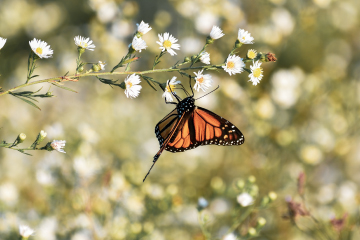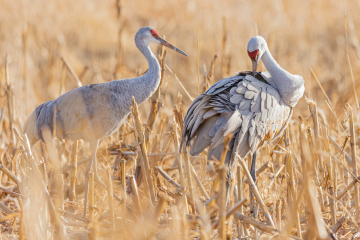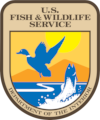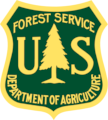In 2008 the Rainwater Basin Joint Venture developed a bio-energetics model to help guide conservation planning and delivery. This model highlighted that late successional vegetation communities (cattails, river bulrush, and reed canary grass) provide only 10% of the foraging resources provided by early successional vegetation communities that include such species as barnyard grass and smartweeds.
A 2004 vegetation assessment mapped over 4,000 acres of late-successional vegetation communities on public lands in the RWB. One of the key strategies in the RWBJV’s revised Implementation Plan is to maximize habitat value on the public lands by promoting early-successional communities on 75% of the wetland acres. To achieve this goal, the Rainwater Basin Joint Venture has significantly increased vegetation management, using a variety of treatments.
To help coordinate the additional management on both public and private lands, the Rainwater Basin Joint Venture leveraged partner funds to hire a Habitat Specialist. This individual has coordinated with public land managers and private lands biologists to facilitate herbicide treatments and disking at multiple sites.
In 2011, 18 Waterfowl Production Areas (2,080 acres), 19 Wildlife Management Areas (1,683 acres), and 40 acres of private lands were chemically treated. A competitive bid process was used to solicit chemical applicators. As a result, costs ranged from $13/acre to $18/acre, a significant savings compared to applications at an individual site. Additionally, 294 acres of Waterfowl Production Areas, 315 acres of Wildlife Management Areas, and 352 acres of private wetlands were disked in 2011. There is no silver bullet for wetland management, and success is often the result of multiple treatments, plus having Mother Nature on one’s side.
The Rainwater Basin Joint Venture has been fortunate to receive two grants for development of a monitoring protocol to evaluate the different management actions. Data have been collected for the last five years and are being analyzed to develop a better understanding of management success, duration of benefit, and cost-benefit.
Funding to complete these management activities was provided through grants from the Nebraska Environmental Trust and North American Wetlands Conservation Act.
For more information contact:
Cortney Schaefer, Habitat Specialist
Rainwater Basin Joint Venture
cortney_schaefer@fws.gov
(308) 385-8618
















